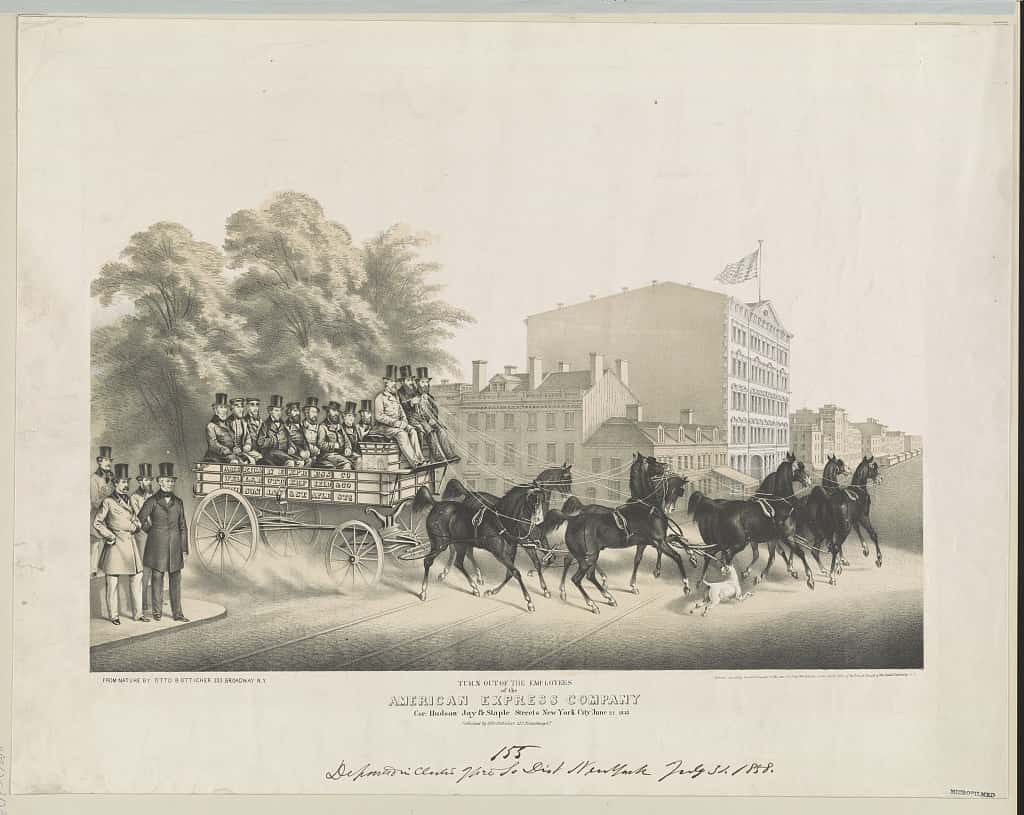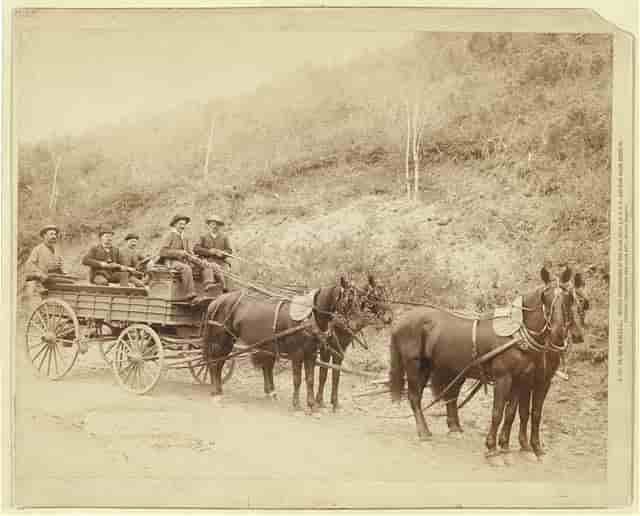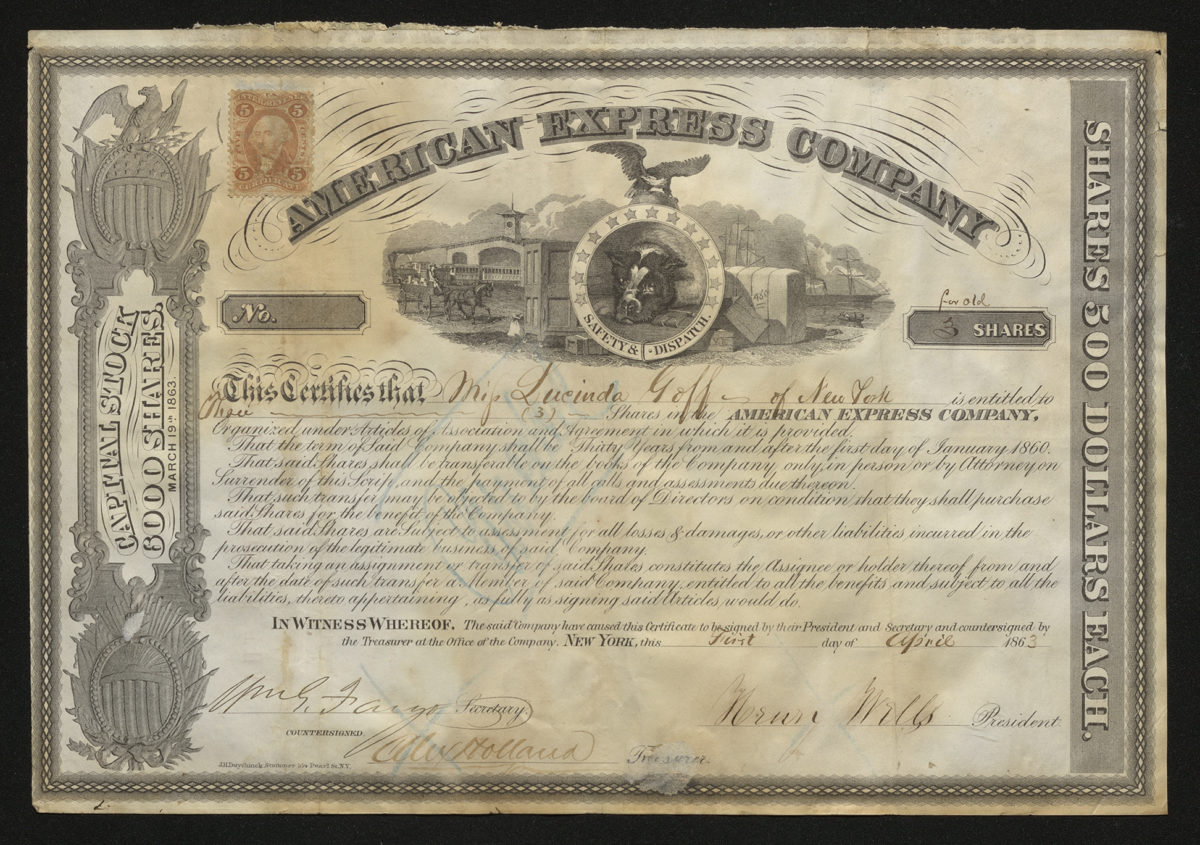
Wells and Fargo Bring the American Express Company West
When Henry Wells' and William Fargo's proposed company expansion was turned down by other company directors, the Wells Fargo Company was created, moving precious cargo across the West while still working with its parent, the American Express Company, in the East.
Header Image: Employees of the American Express Company in New York City, 1858; author Otto Botticher, courtesy Library of Congress [1].
“Westward, ever Westward.”

Companies like American Express and Wells Fargo ensured the protection of valuable cargo in transit; here a group of men armed with rifles guard $250,000 in gold bullion; courtesy Library of Congress
The American Express Company was originally founded as a mail delivery service in 1850 by Henry Wells, William G. Fargo, and John W. Butterfield. At the time, private express mail companies were competing with the slower and less secure U.S. Postal Service. American Express earned a reputation as a reliable service, and many of their biggest clients were banks delivering stocks, currency, and other financial documents. Two years later, Wells and Fargo proposed expanding operations west to California to transport the millions of dollars’ worth of gold from the California Gold Rush. When Butterfield and other directors of the company objected to this proposal, the two men founded Wells, Fargo & Co. The two companies worked together, with Wells Fargo in the west and American Express in the east.
This is a certificate for three shares of stock in the American Express Company from 1863. At the time that this certificate was signed, Henry Wells was acting as president to the company and William Fargo was company secretary. The third signature, of the treasurer, belongs to Alex Holland who was John W. Butterfield’s son-in-law. There is a revenue stamp near the top left corner, which was used to collect taxes or fees. These stamps were first printed and issued by the U.S. government during the American Civil War.
The vignette at the top of the certificate shows cargo stacked on the docks of a shipping port with a horse-drawn cart and train depot in the background. This alludes to the company’s initial freight business, as does the overlaid circular portrait of a watch dog labeled with the words “Safety & Dispatch.” The watch dog was the American Express Company’s first logo, used to symbolize the values of trust, security, vigilance, and service. A terra cotta bust of the American Bulldog can still be found on two of American Express’s former warehouse buildings in New York City.
 University of Nevada, Reno
University of Nevada, Reno
